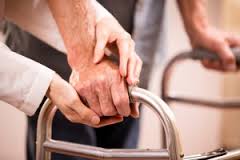
Feb 1, 2017
Blog Life Sciences Powered Clothing for the Elderly Emerges As Wearable Robot Alternative
The global population of individuals older than 65 years is growing at an unprecedented pace, driven by better healthcare, improved nutrition, and a dramatic decrease in infectious disease exposure. Indeed, the elderly population is growing at a faster rate than the global population as a whole, according to the United Nations. A BCC Research study revealed that the elder care market in the United States will see modest growth as government and industry endeavor to meet healthcare, housing, and assistive technology challenges.
Life expectancy at the global level increased from 47 years between 1950 and 1955 to 65 years between 2000 and 2005; it is expected to reach 75 years between 2045 and 2050. Individuals who were born between 1946 and 1964 (commonly referred to as baby boomers) are profoundly affecting the structure of societies, as well as the services and products offered by governments and manufacturers. In its study, BCC Research examined the healthcare, housing, and assistive technology segments of the elder care market. Its focus was mostly on the size of the US market, with comparisons to other markets in developed countries in Europe and Asia.
The US market for individuals older than 65 years, which reached nearly $417 billion in 2015, should total $512.7 billion in 2020, reflecting a five-year compound annual growth rate (CAGR) of 4.2%. Housing is the largest segment of the total market. The US elder care market for assistive technologies is the fastest-growing segment. The strongest growth is in medical and personal monitoring aids, which follows the trend of providing technology and devices that allow seniors to remain in their homes. The table below projects the needs of the US elderly through 2020. Data for 2014 are provided for historical purposes.
US MARKET FOR INDIVIDUALS > 65 YEARS OLD BY TYPE OF NEED ($ MILLIONS)
|
Need |
2014 |
2015 |
2020 |
CAGR (%), 2015–2020 |
|
Healthcare* |
138,012.0 |
154,979.0 |
194,440.0 |
4.6 |
|
Housing** |
237,800.0 |
255,774.0 |
310,320.0 |
3.9 |
|
Assistive technology |
5,741.8 |
6,207.0 |
7,958.0 |
5.1 |
|
Total |
381,553.8 |
416,960.0 |
512,718.0 |
4.2 |
*Healthcare includes pharmaceuticals, selected surgical care, and selected respiratory therapies.
**Housing includes at-home remodeling, independent living, assisted living, skilled nursing care, home health services, and adult day care.
Source: BCC Research
The senior population represents a huge potential market for products and services that are primarily designed to enhance their lives and prolong their ability to remain independent. Assistive technology products help people who would otherwise be unable to participate in many activities of daily living. The technology encompasses a broad range of devices, from low-tech products (such as canes and walkers that help with activities of daily living) to more sophisticated devices (such as wheelchairs and chair lifts).
ACTIVITIES OF DAILY LIVING: SOON TO BE POWERED BY CLOTHING?
Some companies are looking toward care and companion robots that are designed to assist the elderly with tasks around the home. Another solution is a wearable robotic exoskeleton, which can be defined as a wearable mobile machine that is powered by a system of electric motors, pneumatics, levers, hydraulics, or a combination of technologies that allow for limb movement with increased strength and endurance.
Other companies have looked for ways to empower the elderly by literally giving them the strength to do these tasks themselves. Superflex, a startup spinoff of SRI International, is developing that concept through what it calls “powered clothing.” Its lightweight and connected apparel will be equipped with “electric muscles” to support the torso, hips, and legs while sitting and standing up. Its technology is complex, using motors, batteries, and control boards to power biomimicry and ergonomics.
Powered clothing will function to provide wearers with core support and strength to better perform activities of daily living. Superflex CEO Rich Mahoney stresses a distinction between a robotic exoskeleton and what Superflex is developing. “People have become consumed with the idea of the exoskeleton as the only way to think about wearable robotics,” he told Digital Trends. “The exoskeleton itself is a frame. It’s big, it’s bulky, and it has certain limitations in its design.” Instead, Mahoney says Superflex is trying to position powered clothing as a new category of robotics-integrated clothing. Superflex aims to release its first consumer products by mid-2018.
“The US market for assistive technologies for people older than 65 years is projected to grow from nearly $6.2 billion in 2015 to almost $8 billion in 2020, a five-year CAGR of 5.1%,” says BCC Research analyst Peggy Lehr. “As a percentage of the total market, seniors are expected to constitute 36.8% of the assistive technologies market in 2020. One of the strongest growth areas is in medical/personal monitoring aids (including home safety products), which follows the trend of retrofitting homes to ensure extended aging-in-place.”
BCC Research’s study, The Elder Care Market: Products and Services, examines the market by healthcare products and services, housing services and needs, and assistive technologies. Analyses of global market drivers and trends, with data from 2014, estimates for 2015, and projections of CAGRs through 2020, are provided.
In today’s fast-paced biomedical world, researchers and pharmaceutical companies...

Radiopharmaceuticals represent a cutting-edge frontier in modern medicine, offer...

Implantable Remote Patient Monitoring (IRPM) devices are revolutionizing healthc...

We are your trusted research partner, providing actionable insights and custom consulting across life sciences, advanced materials, and technology. Allow BCC Research to nurture your smartest business decisions today, tomorrow, and beyond.
Contact UsBCC Research provides objective, unbiased measurement and assessment of market opportunities with detailed market research reports. Our experienced industry analysts assess growth opportunities, market sizing, technologies, applications, supply chains and companies with the singular goal of helping you make informed business decisions, free of noise and hype.